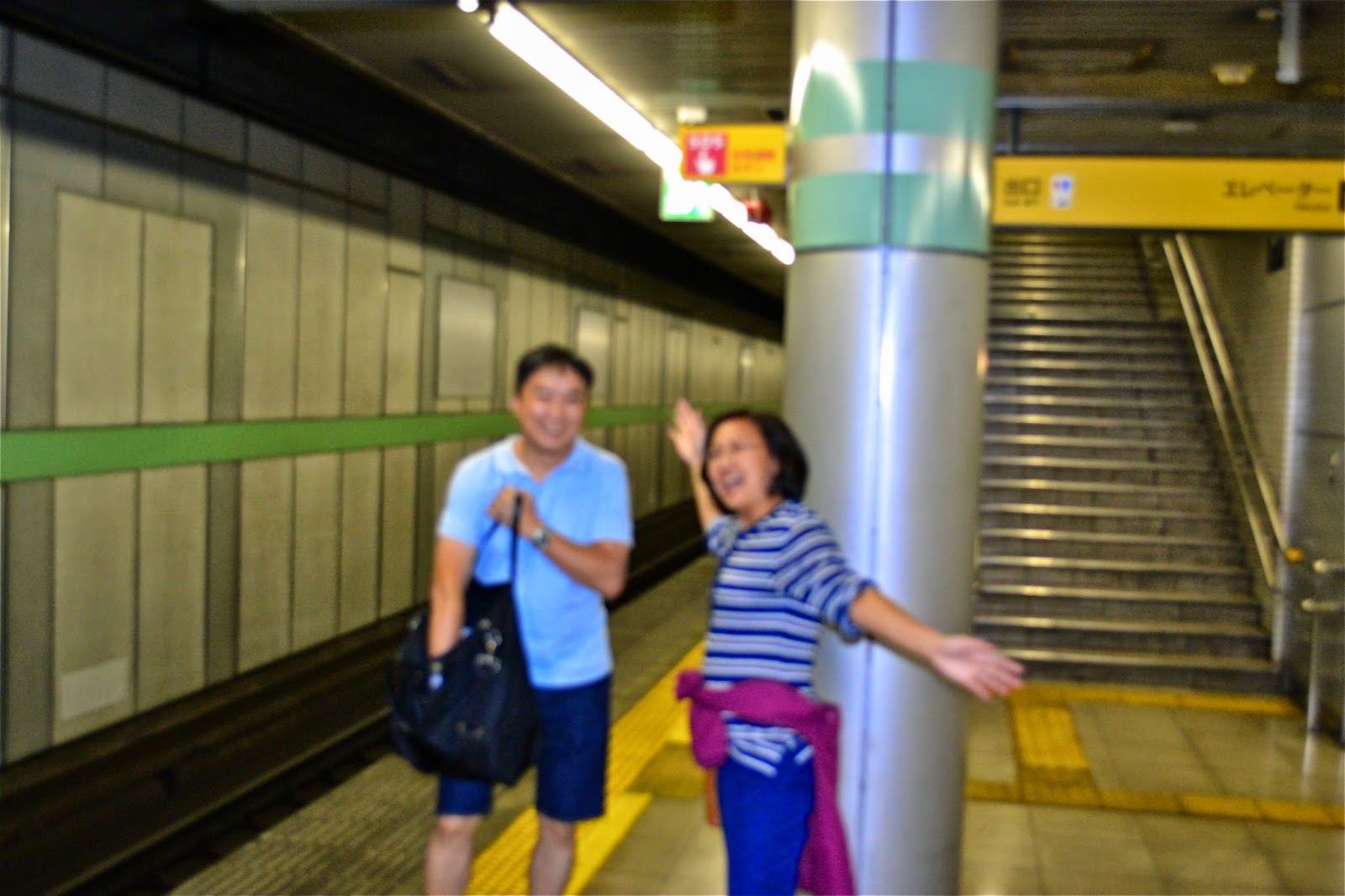October 8, 2014
I was excited to see an old friend. He's practically a brother to me. I remember our college days when he and his buddies would come over to the house and just hang out with my sisters and me. Ah, those were the days. And we both have so fond memories of those fun times.
 |
| I caught up with my good friend Joseph in Kyoto. |
Through Facebook, we found out that we were both in Japan. I was visiting the country with Alan as part of my birthday celebration. Joseph happened to be there vacationing at the same time.
"I'm in Osaka right now but I can meet you in Kyoto," Joseph said in his FB message. It would be good to see you after sooo many years!"
"Oh yay! You'll get to meet my hubby!" I was just as thrilled.
Alan and I took the Shinkansen to Kyoto the next day. Through Facebook messenger and text messages, we coordinated where and when to meet each other at the Kyoto bullet train station.
 |
| Alan and I took the Shinkansen or bullet train to Kyoto. |
Soon as we walked past the train station's exit turnstiles, we found Joseph patiently waiting for us. After more than twenty years, it was sheer delight to see him again and to give him a big warm hug.
Like a big brother, Joseph immediately took charge. He helped us into a cab and accompanied us to our hotel, a ryokan called Seikoro Inn.
 |
| We dropped off our bags at the ryokan, Seikoro Inn. |
After dropping off our bags there, he took us to the nearest subway station and showed us how to get back to town. Unlike Tokyo's subway, Kyoto's was a little confusing. We were glad Joseph was with us to lead the way.
 |
| Joseph was sharing his WiFi connection |
 |
| Waiting for our train in the subway station |
He only had enough time to have lunch with us before catching his flight back to Hong Kong. As we weaved our way inside Kyoto's big mall called Avanti, he kept asking us, "What would you like to eat?"
It didn't take long for him to find a nice restaurant called Kyoto Suehiro that featured hot stone cooking. Excellent choice!
At the center of our table was a square slab of Mount Fuji lava stone where we personally grilled our choice of steaks and veggies. Well, it was mostly Joseph who took care of the cooking. With his chopsticks, he would put the bite-size steaks on the hot stone and grill them to perfection. Then he'd transfer them onto our plates. The miso soup, salad, and rice helped round out the delicious meal.
 |
| Joseph treated us to a delicious lunch at Suehiro restaurant inside Avanti Mall. |
 |
| Enjoying lunch with Joseph in Kyoto. I'm glad Alan had the chance to meet him. |
To make my sisters jealous, I posted our photos on Facebook with the caption, "Guess who I found in Kyoto?"
"Hey, it's Joseph Dee!" My family and friends were pleasantly surprised to see us together in Kyoto.
We talked about a lot of things, remembering our good old days with my siblings. My mind was flooded with memories of the simple joys we shared back then. He always treated us like his family away from home. And to us, he will always be a dear brother. We all share a strong bond, a unique connection that is almost hard to explain.
 |
| It's great to be reunited with a special friend who is just like a brother to me. |
Thanks, Joseph, for hosting a delicious lunch, for the helpful Japan shopping tips, and most importantly, for reminding me about our special kinship. It's so nice to be reunited with family even in this part of the world.
 |
| Grilling our steaks using hot lava stone in Suehiro. |
This story was continued from Tempura Master. Stay tuned to follow my Japan adventure series. More to come.













































